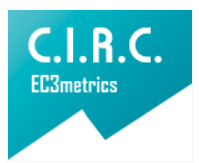Phonoaudiological actions in older subjects with hearing aids
Acciones fonoaudiológicas en adultos mayores usuarios de audífonos
Main Article Content
Adults who have lost some extent listening skills are required to use hearing aids, during the proces of adaptation of the prosthesis is necessary assessment and intervention skills detection, discrimination, identification, recognition and listening. The intervention process also implies that professionals in audiology or audiologist assure restoration and user habituation to new ways of listening to the user, leading to actions of hearing rehabilitation to adults. This project aimed to describe the actions, strategies, materials and time reporting professionals in their daily work within the hearing aid fitting process to stimulate the auditory skills of adult users of air conduction hearing aids and generate an analysis of the actions frequently identified. For this a semi-structured interview was used individual application. The results show that the practices performed by audiologists for hearing rehabilitation are diverse, some audiologists tend to confuse them with the actions of the adaptation process of hearing aids and other professionals consider that it is not necessary actions auditory rehabilitation in all cases adaptation headphones in older people, since it depends on communication skills for the instrument user.
Downloads
Publication Facts
Reviewer profiles N/A
Author statements
Indexed in
- Academic society
- Bogotá: Corporación Universitaria Iberoamericana
- Publisher
- Bogotá: Corporación Universitaria Iberoamericana
Article Details
ASHA. (2013). Guidelines for Hearing Aid Fitting for adults. ASHA ad hoc committee on hearing aid selection and fitting. Consultado en mayo de 2013. Recuperado de http://www.asha.org/docs/html/GL1998 00012.html
Assor, A & Connell J.(1992). The Validity of Students´self-reports as Measures of performance Affecting self-Appraisals. Cap. 2 en: Schunk, D. Meece, J.(1992). Student Perceptions in the Classroom.New Jersey: Lawrence Erlbaum Associates.
Begoña, P.; Durante, P. y Noya, B. (2001). Conceptos fundamentales de terapia ocupacional. España: Ed. Medica Panamericana.
Browmana, G.; Gómez, A.; Haynesa, B.; Jadada, A.y Gabriel R. (2001). Herramientas para la práctica de la medicina basada en la evidencia (y II).Desarrollo de guías de práctica clínica basadas en la evidencia: de abajo-arriba. Med. Clin. (Barc) 116: 267-270.
Cardemil, F.; Aguayo, L. y Fuente, A. (2014). Programas de rehabilitación auditiva en adultos mayores, ¿qué sabemos de su efectividad? Available online 3 March 2014.
Acta Otorrinolaringologica (English Edition), 65(4), pp. 249-257.
De Larra, R. (2007). Discapacidad y eAccesibilidad. Fundación Orange, cuadernos 7. Recuperado dehttp://www.carm.es/ctra/cendoc/haddock/13584.pdf.
Dillon, H.; James, A. M. y Ginis, I. (1997). Client Oriented Scale of Improvement (COSI) and its relationship to several other measures of benefit and satisfaction
provided by hearing aids. Journal of the American Academy of Audiology, 8, 27–43.
Gabriel, D.; Veuillet, E.; Vesson, J.F. y Collet, L.(2006). Rehabilitatión plasticity: influence of hearing aid fitting on frecuency discrimination performance near
the hearing-loss cut-off. Hearing Research 2006; vol. I, pp 49-57.
Gómez, O. (2006). Audiología Básica. Universidad Nacional de Colombia. Pag 211-225
Hawkins, (2005). Effectiveness of Counseling-Based Adult Group Aural Rehabilitation Programs: A Systematic Review of the Evidence. Journal of the American Academy of Audiology, 16, 7, pp. 485-493(9).
Hernández, R., Fernández, C. y Baptista, P. (2008). Metodología de la investigación McGraw Hill.Humes, L. E. (1991). Understanding the speechunderstanding problems of the hearing impaired.Journal of the American Academy of Audiology,2, 59–69.
Janesick, V. (1998). Stretching Exercises for Qualitative Researchers. Thousand Oaks: Sage Publications.
Macintyre, A. (1981). Tras la virtud, CRITICA: Barcelona.
Martín, D. (2006) Sordera. Los derechos de la Discapacidad.Pp. 55.
Pérez, C. y Marco, J. (2006) Lecciones de otorrinolaringologíaaplicada. España, Glosa Editorial, 1 Pp. 293.
Resolución 8430 de 1993. Por la cual se establecen las normas científicas, técnicas y administrativas para la investigación en salud. Ministerio de Salud.
Resolución 48/96 de 1994 de la Asamblea General de las Naciones Unidas. Normas Uniformes sobre la igualdad de oportunidades para las personas con discapacidad.
Shaffer, D. (2000). Psicología del desarrollo: Infancia y Adultez. 5° ed. Mexico: Thomson
Shunk, D. (1997). Teoría del aprendizaje. México: Prentice-hall.
Tamblay, N.; Villalobos, I.; Pastene, A. y Rahal M. (2008). Impacto social del uso de audífonos en adultos mayores. Revista Otorrinolaringología.
Cirugía Cabeza y Cuello. 68(1). Recuperado:www.scielo.cl/suelo.php?pid=s0718-48162008000100004&Script=Sci-arttext.












